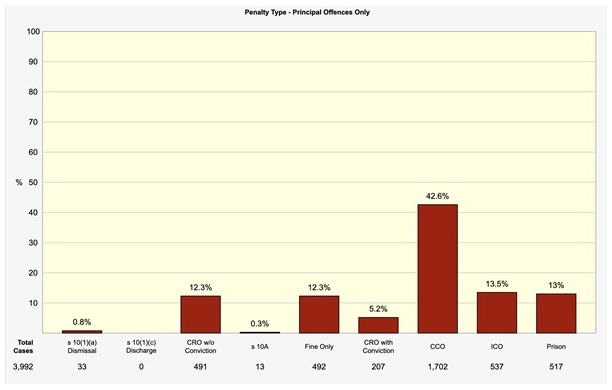What is the offence of affray?
It is an offence under section 93C of the Crimes Act 1900 (NSW) to cause or take part in an affray.
The term "affray" refers to the use or threat of unlawful violent conduct in the presence of others. This conduct must be enough to cause a normal person to fear for their own personal safety. Typically, these offences occur in public but can also happen in private settings where there is a gathering of people. They generally involve more than one person and often occur because of a brawl or fight between different people.
A person charged with affray will not only be liable for their own actions but for the overall conduct which amounts to the offence. This means if a person individually did not contribute much to the violence, they might still be held liable for the more serious violent conduct of others if it is still part of the altercation or incident the affray concerns.
The offences of riot and affray are often grouped together and have very similar elements to prove. They both involve the use or threat of violence around other people and causing fear for personal safety in the minds of others. Riot has the added requirements of needing at least 12 people involved in the incident, as well as the element of a "common purpose" for the violence. An affray, on the other hand, can involve instances of spontaneous violence and only one person is technically required for the offence (although most often there is multiple people involved).
Because of the greater scale of violence caused in riot matters, the penalties for riot are more severe. However, if dealt with in the district court, an affray charge can still carry a penalty of up to a decade full-time imprisonment.
Elements of the offence:
There are three elements that must be proved by the prosecution for a person to be found guilty of this offence.
- A person uses or threatens unlawful violence towards another; and
- This conduct would cause "a person of reasonable firmness" to fear for their own personal safety; and
- They intend to use or threaten violence OR are aware that their conduct may be violent or threatening.
- Using or threatening unlawful violence towards another:
The use or threat of unlawful violence includes many different scenarios, but most often involves people coming to blows, attempting to hit other people or physically threatening to hit other people.
A common example of an affray is a brawl or melee between a group of people. Another example is a group of people ganging up on a victim or group of victims who aren't necessarily fighting back.
If the offence only involves the threat of unlawful violence, these threats must consist of more than just words. For example, a person may verbally threaten to hit or hurt someone, but this must be backed up by physical threats as well, like raising a fist or a weapon at another person.
- Causing a "person of reasonable firmness" to fear for the personal safety:
This is a test of the level of public alarm and concern that is generated by the affray as a whole. The prosecution must successfully argue that the conduct that occurred all together (so not just the conduct of an individual offender) would have or actually did cause people to genuinely fear for their safety. Often times the prosecution can show evidence of the public reaction to help them with this argument. Evidence of people calling the police or security, running away from the incident, or actually getting caught up or injured by the violence will help prove that the violent conduct caused actual fear.
It should be noted that there is no requirement for people outside of the affray to actually be present. The prosecution is able to argue this from a purely hypothetical standpoint – so something along the lines of "if someone else had been there, it's obvious the level of violence was so high they would have been afraid for themselves". However, if there are other people present, this makes the conduct more serious. The more involved bystanders become in the violent conduct, the harsher the penalty that will likely follow.
- Intending to cause or threaten violence OR being aware that conduct is violent/threatening:
This element means that a person cannot unintentionally or accidentally engage in violent or threatening conduct and still be charged with affray. In most circumstances the intention to use or threaten violence is self-explanatory from a person's actions. Actively engaging in a fight or physically accosting another person is difficult to do without knowledge and intention.
However, there may be circumstances where a person's conduct is misinterpreted as violent or threatening. For example, someone watching from afar may see two friends "play-fighting" with each other and form the view that something much more serious is taking place. Additionally, someone might interpret innocuous words and gestures as violent threats if they lack context or have made the wrong assumptions.
Defences available:
Self-defence:
A person might not have committed an affray if they can show on the facts that they were acting in defence of themselves, another person or their property. This is because an affray involves the use or threat of unlawful violence, and violent conduct committed in legitimate self-defence is lawful.
As a defendant, a person has to only show that there is a reasonable case for self-defence on the facts and then it is the prosecution's job to prove beyond reasonable doubt a person was not acting in self-defence.
The court applies a test to the facts to determine whether a person acted in self-defence or not. It must be found:
- That a defendant honestly believed their conduct was necessary in the situation; AND
- That a normal, objective bystander would look at the situation as the defendant understood it and also find that they had made a reasonable and proportionate response.
At times the court will find that a person did genuinely believe their actions were necessary but can't reasonably accept that their response was appropriate and proportionate to the situation. This is known as "excessive self-defence" and means a person will not be acquitted of the affray. However, while not absolving a person of the offence it can still be used to get a more lenient penalty on sentence.
Penalties:
Affrays are sentenced based on collective responsibility. That means that each person involved in an affray is responsible for all of the conduct and consequences of the offence.
The Court takes a fairly strict view on affrays – particularly because they often involve public violence, young men and drugs/alcohol. This is something the community has significant concerns about and the Court must be seen to be heavily condemning this kind of conduct and dealing out appropriately harsh sentences.
An affray is known as a "Table 1" offence – which means a person will be tried and sentenced in the Local Court unless the prosecution or the accused choose to deal with it on indictment and take it up to the District Court. There are different maximum penalties depending on whether a person is sentenced in the Local or District Court. The District Court is generally reserved for more serious matters and there are therefore harsher maximum penalties available under this jurisdiction.
| Local Court | District Court | |
| Max. term of imprisonment | 2 years | 10 years |
| Max. fine | $11 000 | N/A |
The Court is also able to order non-custodial alternatives to imprisonment that allow a person to remain in the community under a certain level of supervision. These community-based sentences generally involve a "good behaviour bond" and can require a person to report to community corrections at regular intervals, undertake community service or submit to conditions that restrict or dictate certain parts of their lifestyle.

Almost half of the affray offences that were sentenced between September 2018 and December 2021 were dealt with by way of a Community Corrections Order ('CCO'). This is a community-based alternative to imprisonment like the ones mentioned above.
Of the 26.5% of cases that were dealt with by a term of imprisonment – either by an Intensive Corrections Order or full-time custody – the vast majority had a prior offences on their criminal record.
